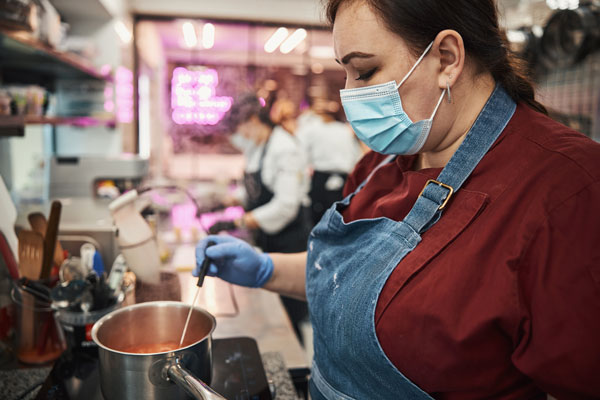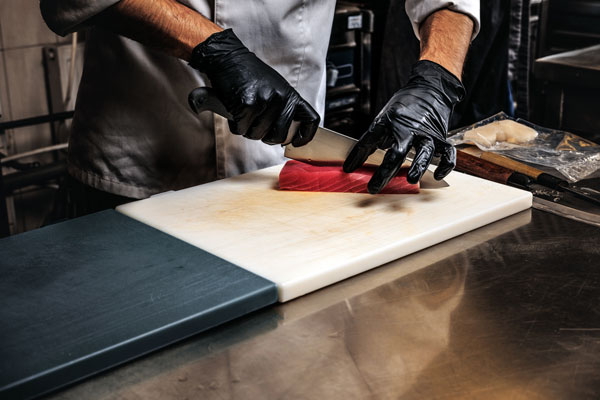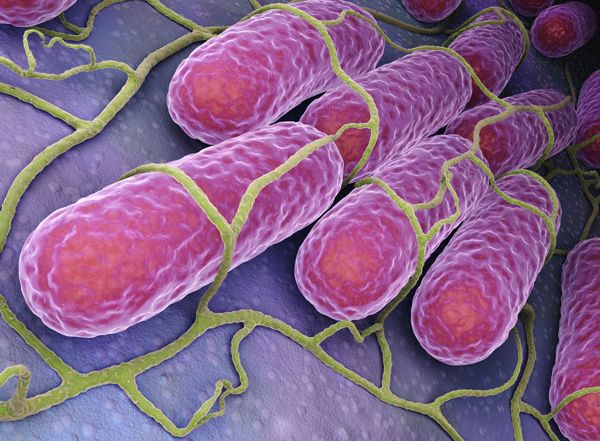Properly Cleaning and Sanitizing: The Right Chemical Mix to Maintain Ultimate Effectiveness
A few weeks ago, my family and I had the pleasure of setting sail on a cruise vacation. It is truly one of the only ways that I find that I am able to unplug from work and relax for a small spell. However, as I walked around the ship in our post-COVID world, I couldn’t help but admire all the extra cleaning steps the staff were undertaking to keep us all as safe as possible while in the middle of the ocean with 3,000 other vacationers. All of this cleaning and sanitizing had me thinking about how we each clean and sanitize our own operations and which chemicals we chose to use.
There are countless chemicals you could use for your foodservice operation for both cleaning and sanitizing, but is this something you have recently explored? When I was in operations, it seemed we just went with the same one we always used, unless a sales representative pointed out a different option or we became aware of a cheaper product. When you start an operation, there are so many decisions to make; I wonder how much time is spent on which cleaning and sanitizing products to use. While cost is always an important consideration, there are other considerations that are perhaps just as important, including form, impact to the environment, the safety of the product, and how versatile the product is.
…safety should be a concern with everything we do in a foodservice operation. Your employees may not be familiar with the strong chemicals that you can use in a foodservice operation, and educating them to protect themselves, other employees, customers, and your equipment is vital to ensuring you get the most out of the product.
When looking at different products, it is important to know in what form the product will come. Is it a liquid or a powder? You want to find something that is easy to use from a dispensing consideration, but also one that is usable. Case in point, a few years ago I had the great idea to purchase sanitizer tablets to use in the three-sink dishwasher at our church. It seemed straight forward, you fill up the basin to the marked line on the sink, and a certain number of tables, and walk away. A few weeks later, I noticed not many of the tablets were used. Six months later, I was alarmed to see that almost none of the tables were used outside of the times that I had been working in the kitchen. Upon questioning those who often used the kitchen, it became very apparent that the tablets were easy enough to dispense but took so much time to dissolve in the sinks that they were not worth the wait. In this case, the product was easy to dispense, but was not at all usable for that operation – at least, not in the perception of those volunteers who routinely worked in the kitchen.
Impact to the environment is perhaps more important now that it has ever been. I don’t intend to imply that environmental concerns were not important 10 to 15 years ago, but today our customers and our employees are more aware of our practices than they were previously. Choose a product that is safe for the environment, but also look for a product that has sustainable packaging and is manufactured in a sustainable fashion should also be key considerations.
Of course, safety should be a concern with everything we do in a foodservice operation. Your employees may not be familiar with the strong chemicals that you can use in a foodservice operation, and educating them to protect themselves, other employees, customers, and your equipment is vital to ensuring you get the most out of the product. If your employees are like me, they will skip reading the directions assuming they know how to use it. But force them to read the directions, emphasize that more is not always better, and don’t use in a manner not prescribed by the manufacturer.
Versatility should also be a key factor in determining which cleaning product to use. The fewer cleaning products and sanitizers you have in your operation, the easier it is for everyone – including you as the manager who must keep these supplies on hand. A good cleaning and sanitizing plan will recognize that there are cleaners designed for certain uses in the kitchen – for example, an all-purpose cleaner vs. a degreaser, or products designed specifically for certain uses (griddle cleaner vs. ice machine cleaners) – and each has their place in the kitchen and will make your employees work a bit easier if the proper chemical is used in the correct manner.
Like anything in business, a good game plan with your cleaning and sanitizing protocols will make everyone’s life in the operation just a bit easier. Spending some time on getting the right tools for the job now will also help your bottom line and keep your employees and guests, just a bit safer. Risk Nothing
READ MORE POSTS
Food Traceability in Foodservice Operations: An Essential, and Soon-to-be Required, Component of your Food Safety Plan
In June, I discussed the importance of having a solid food defense plan, and I provided you some resources for developing or strengthening your food defense plan. As I was writing those blogs, my mind kept turning toward food traceability. While they are distinctly different concepts, food traceability goes hand-in-hand with a food defense program. I would argue for your food defense plan to be effective, you must have an effective internal food traceability program, where you can trace the product back to the supplier (backward traceability), but also be able to trace the product from the supplier to the guest who was served the product (forward traceability).
Food Defense Plan Resources – at just the right price…
Earlier in the month, I discussed the importance of having a solid food defense plan in place for your foodservice operation. Even if the first version of your plan is not perfect, it is a start. Having plans down on paper will force you to think through the process and ensure the vulnerable points where opportunities exist for possible contamination within the operation are mitigated.
Don’t Turn a Blind Eye to Your Food Defense Practices
Late last week, as I mindlessly scrolled through Twitter, I ran across a Tweet suggesting the #IceCreamChallenge from summer 2019 was the real cause of the Coronavirus spread. Of course, the Tweet was made tongue in cheek, but it did cause me to reflect on that challenge, which had a short life on social media in the summer of 2019.
Salmonella and Listeria monocytogenes: Serious Threats to the Safety of Food
Earlier in the month, I mentioned the top microbial enemies we all face in foodservice operations, E. coli, Campylobacter, Salmonella, and Listeria monocytogenes. While we discussed E. coli and Campylobacter, we did not get around to discussing Salmonella or Listeria monocytogenes.










